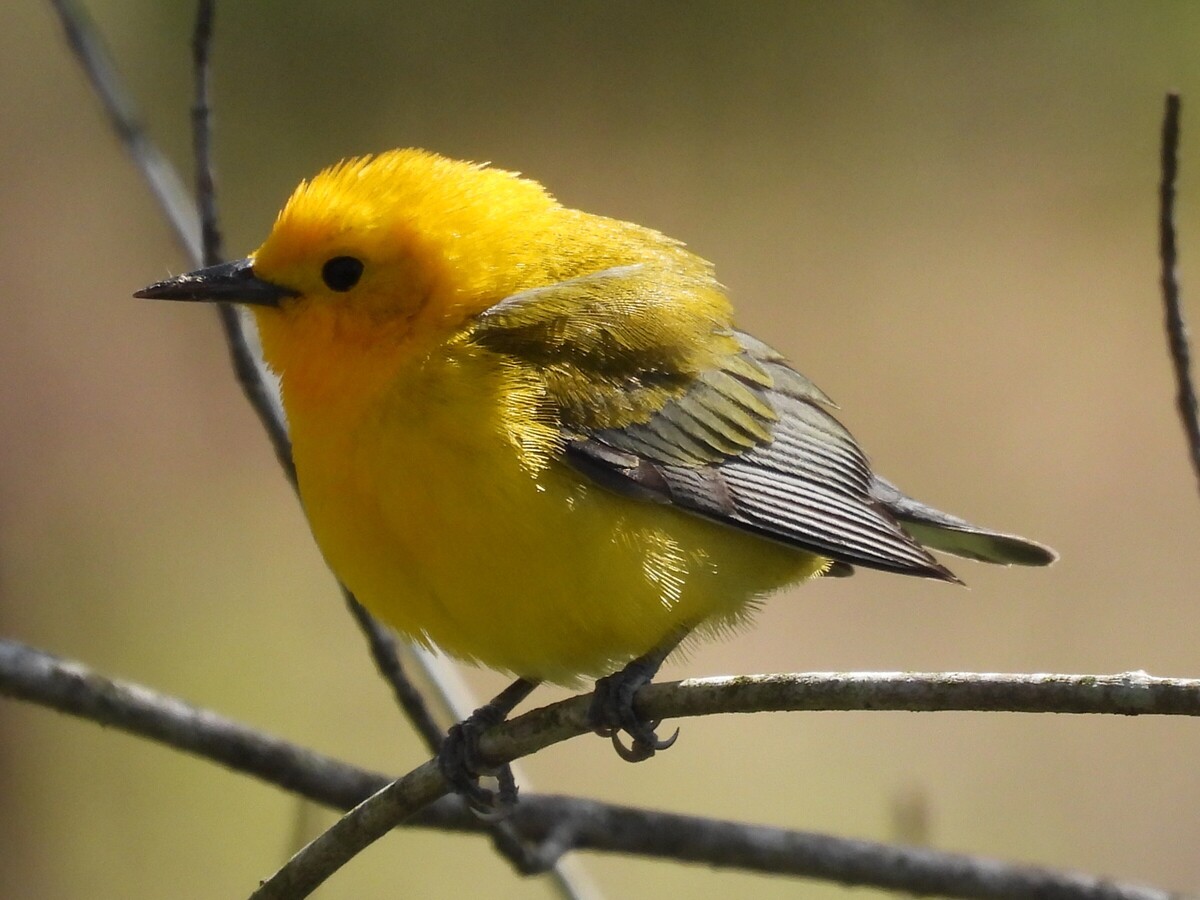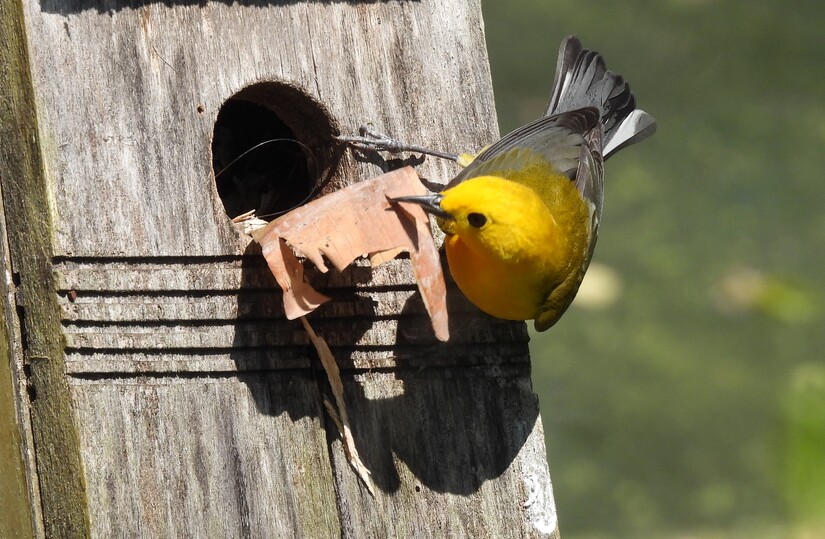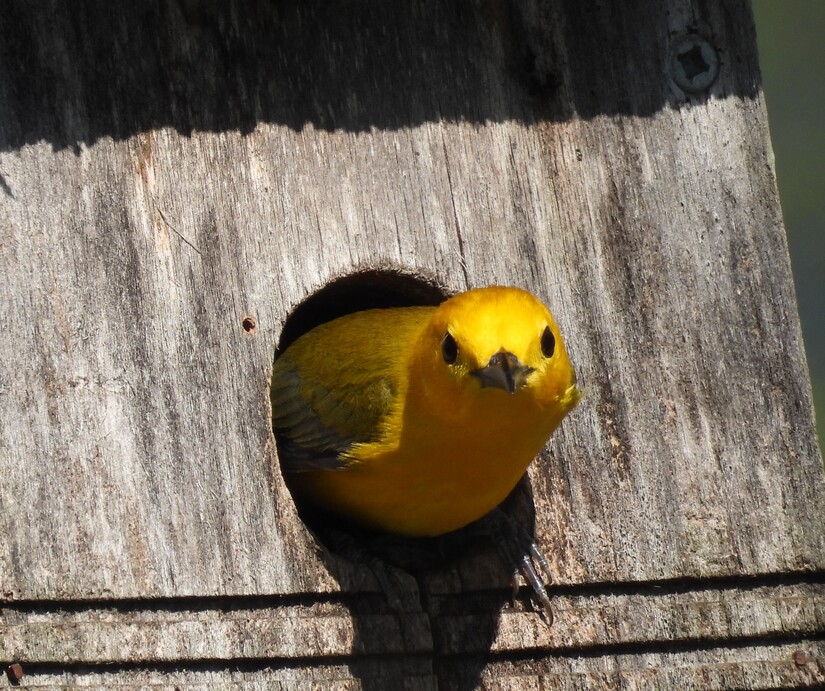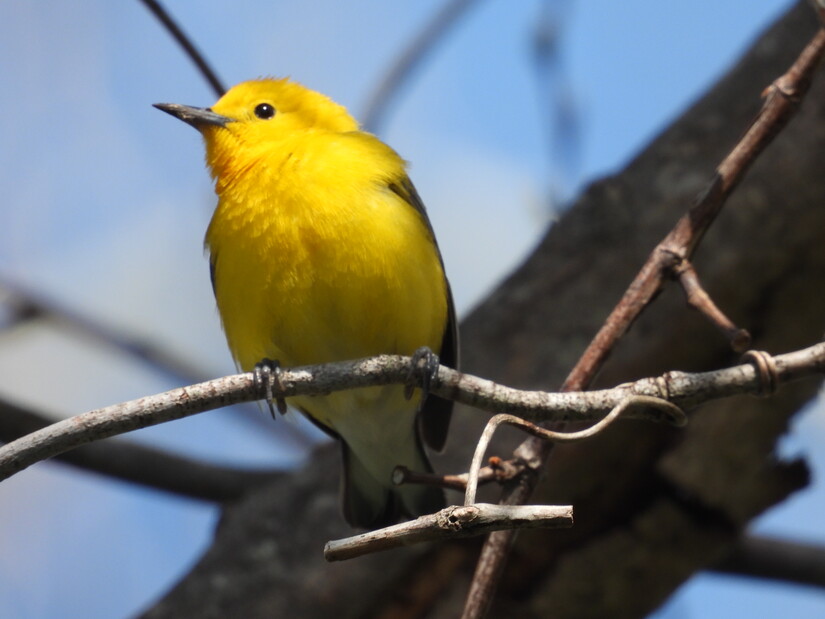Image

by Mike Strzelecki*
May is the height of the spring bird migration, where scores of bird species pass through the Boyertown area on their way to summer breeding grounds. Some will stay in the Boyertown area while others will keep moving north. Many of the migratory birds that pass through this area are tiny, colorful, and very elusive to see. But sometimes it is nice just to know that these lovely birds exist and fly about freely.
The prothonotary warbler is one such bird. Though tough to find, it is one of the most striking migratory birds, with an iridescent yellow body that seemingly flashes sunshine. Birders consider seeing a prothonotary warbler a seasonal highlight and will travel great distances to experience (and sometimes photograph) the beauty of one.

Prothonotary warblers are named for the bright yellow robes worn by Papal Clerks of the Catholic Church, known as prothonotaries. They breed in certain areas of southeast and northeast Pennsylvania. They tend to nest in wooded, swampy areas - like marshy bogs on the edges of deciduous forests. They are sometimes locally called “swamp canaries.”
Actually seeing a prothonotary warbler is admittedly difficult. To do so, one could search on ebird.com to see where they are being seen in your region. Ebird.com is an international database of bird sightings where both casual and serious birders can post their bird sightings so that others can use it as a resource in their bird searches.
If you can find where a prothonotary warbler is nesting, then actually seeing one is not too difficult. Their brilliant coloration makes them easy to find in forests, as they flash yellow when flitting about. Unlike other certain warblers that tend to gravitate to the high canopies of trees for safety and better bugs, prothonotary warblers tend to stay low, often around eye level. During breeding, they are active singers making them easier to locate. And, based on my experience, they don’t seem to have the intense fear of humans that so many other warblers have; they will often continue going about their business, even when being watched.

Prothonotary warblers are opportunistic eaters - not too fussy. They prefer aquatic bugs (which is why they nest in swampy areas and stay lower to the ground), but will eat most insects, seeds, and terrestrial tid-bits. They are unique among warblers in their nesting proclivities. Whereas most warblers build nests either on the ground or in living trees with lots of foliage for protection, the prothonotary warbler builds its nest in holes in the trunk cavities of dead trees. These holes are often remnants of old nests once dug by woodpeckers.

Prothonotary warblers winter along the northern rim of South America, into Central America. Come spring, they move north to their breeding grounds. Most will stop in the southeastern United States to breed (an area rich in swampland), but some will continue on into the Mid-Atlantic. Their northernmost breeding area is around the Pennsylvania/New York border.

The prothonotary warbler has held a unique place in American history. In 1948, Alger Hiss, a government official, was arrested and accused of being a Russian spy during the Cold War. At the trial, the prosecution’s success depended on whether they could prove that Hiss knew a gentleman named Whittaker Chambers, a member of the Communist Party. It was shown at the trial that the two men routinely birded together and that Hiss had a special interest in seeing prothonotary warblers along the Potomac River. Hiss was found guilty based on this revelation and his conviction opened the door for Richard Nixon to rise to power and become president.
* Mike Strzelecki is a freelance travel and outdoor writer, and 1981 graduate of Boyertown Area Senior High School. He writes from his house in Baltimore, Maryland. In his spare time, he joins his wife on adventures around the country observing and photographing birds.